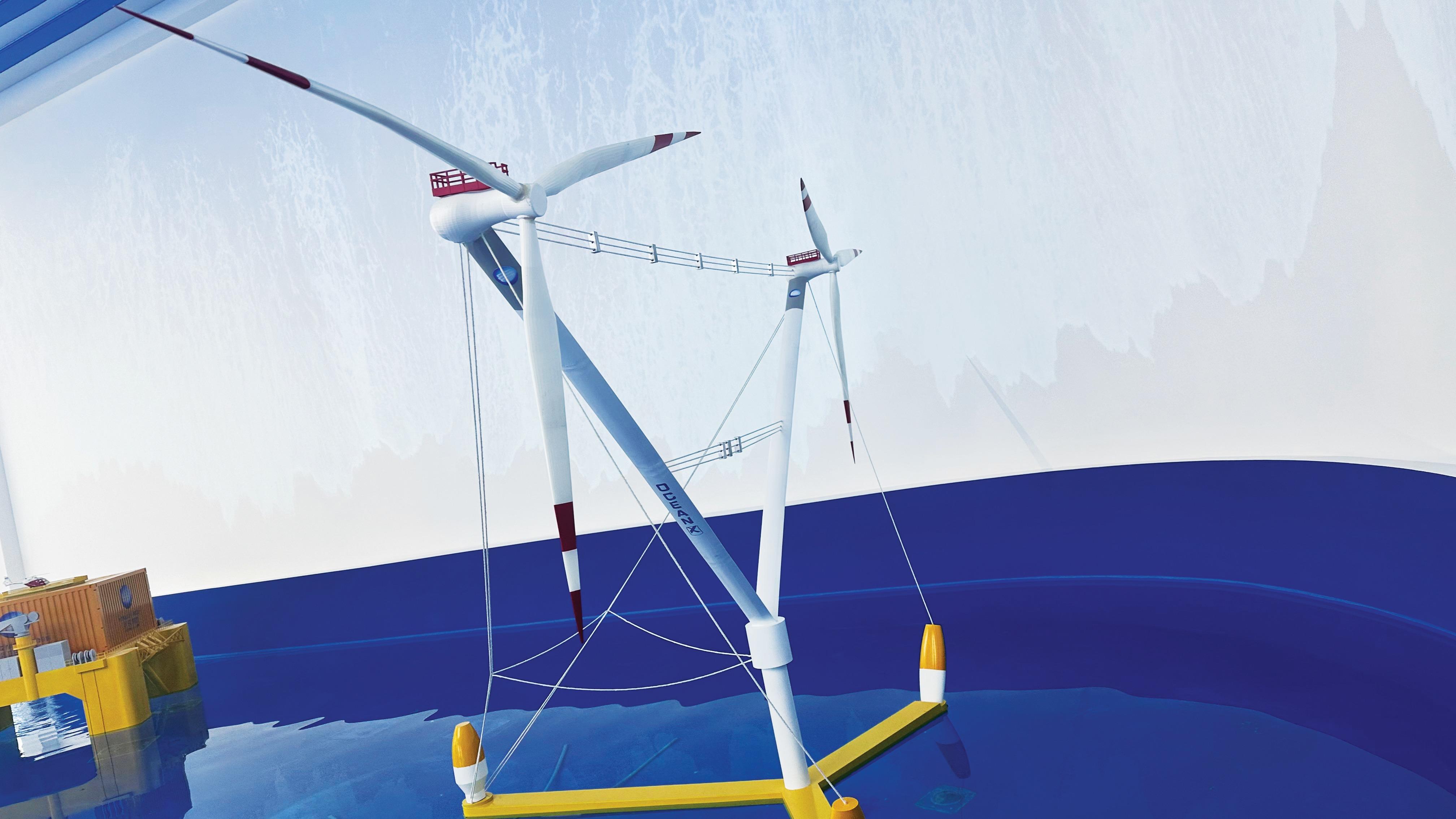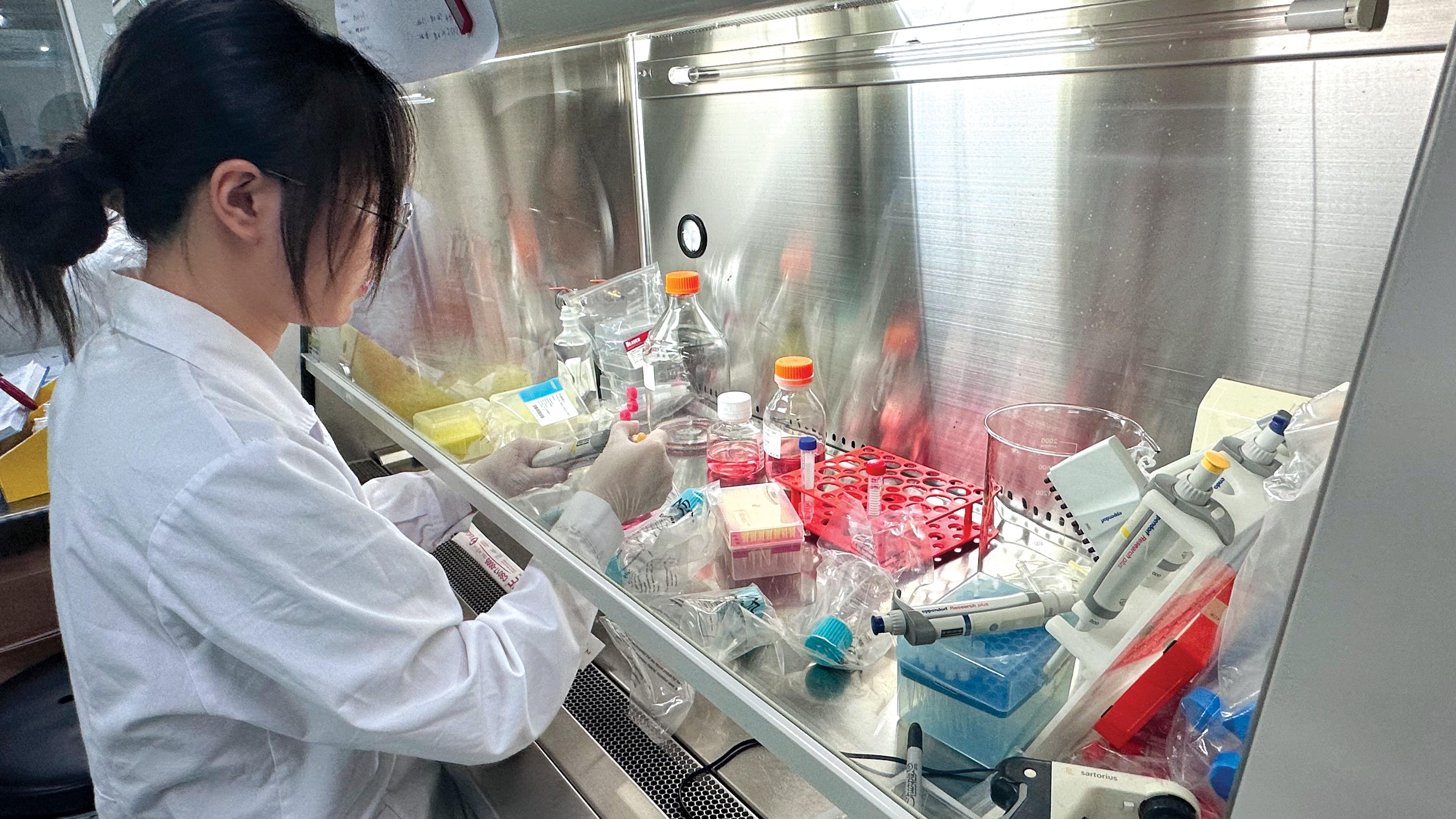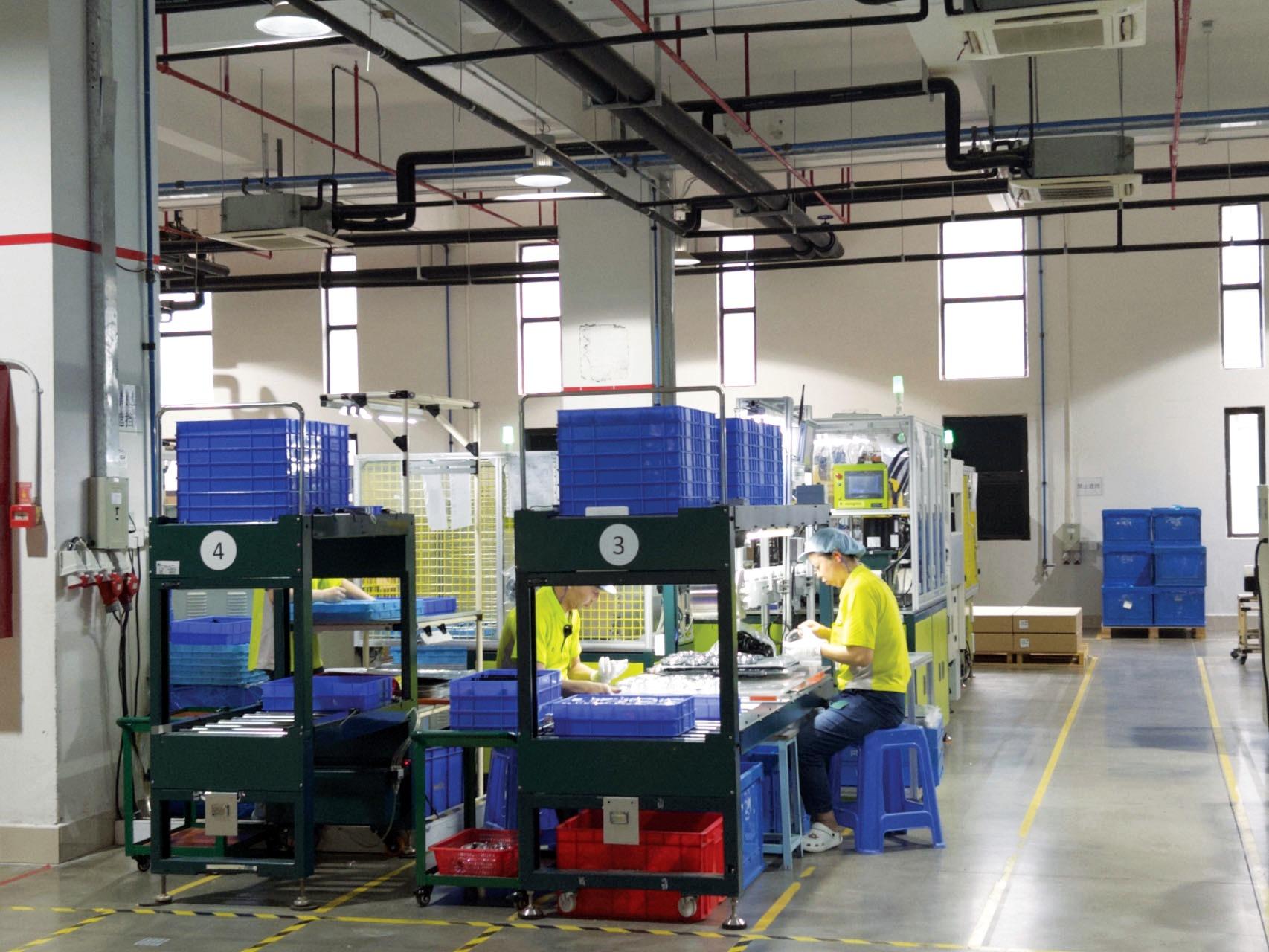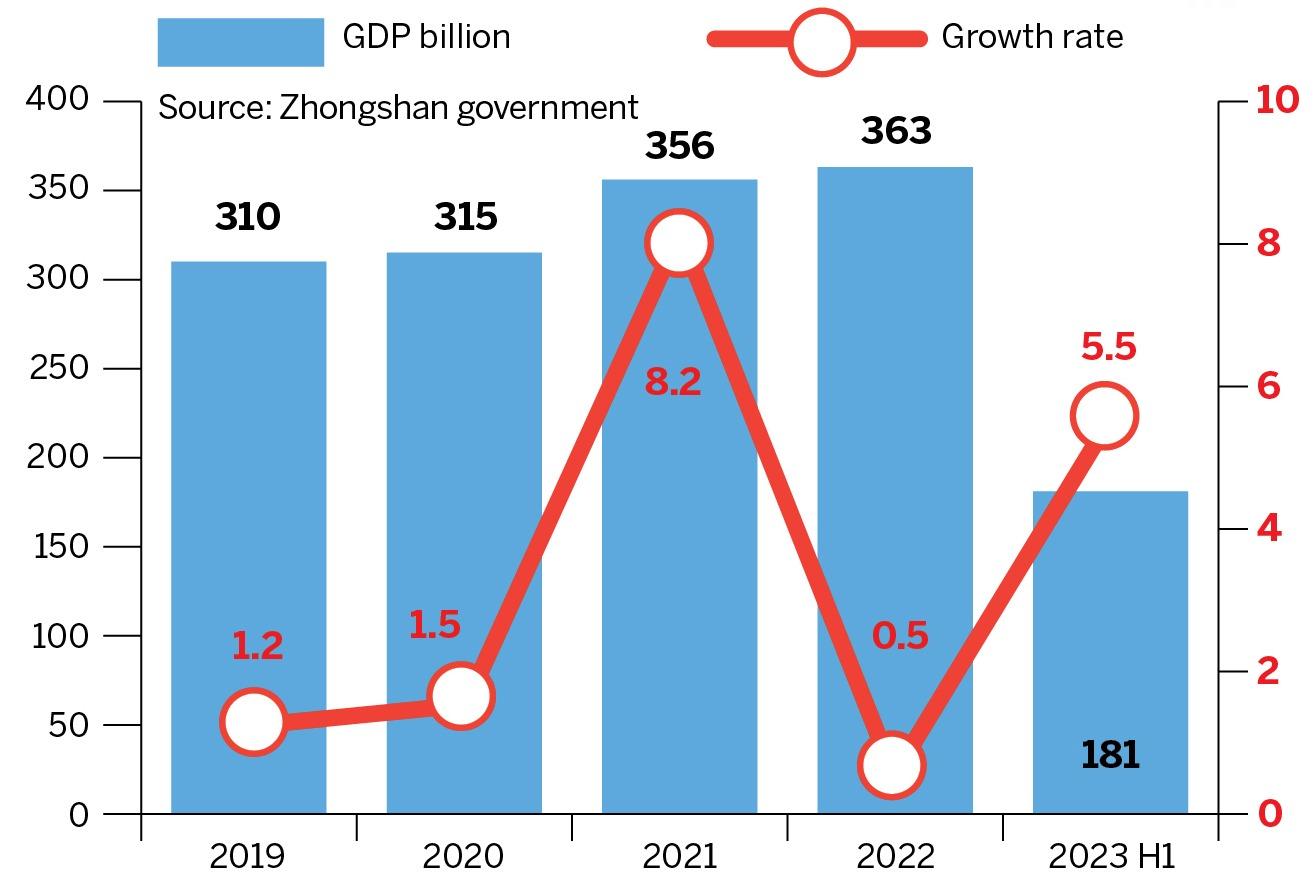Sun Yat-sen’s birthplace is on a mission to reclaim its place as one of the most prosperous cities in the Pearl River Delta, and is pairing up with Shenzhen to achieve its revitalization. Chai Hua reports from Zhongshan.

Editor’s note: February 2024 marks the fifth anniversary of the publication of the Outline Development Plan for the Guangdong-Hong Kong-Macao Greater Bay Area. The first of a series of China Daily articles about the intriguing stories of each of the Greater Bay Area cities in the past five years delves into the revitalization of the ancient city of Zhongshan.
The historic city of Zhongshan ranked second only to the boomtown of Shenzhen in terms of gross domestic product growth rate among the nine Chinese mainland cities in the Guangdong-Hong Kong-Macao Greater Bay Area in the first half of this year.
Zhongshan — located on the western coast of the Pearl River Delta — was one of the pioneering and most prosperous cities in the area at the start of China’s reform and opening-up in the 1980s, with lighting, furniture and clothing manufacturing as its pillar industries. The city was also the cradle of four prominent department store chains, including Wing On and Sincere, which have been household names in Hong Kong for decades.
However, Zhongshan — better known as the birthplace of national hero Sun Yat-sen — has faded since its heyday in 2012, and has gradually been overtaken by other cities in Guangdong province. Although the city has shown signs of a rapid economic recovery this year, with strong growth momentum, its total GDP still remains almost at the bottom, compared to others in the region.
Riding on the opportunities for integrative development of the Greater Bay Area’s 11-city cluster, can Zhongshan rise again and redeem its former glory?
 A model of OceanX, a dual-rotor floating offshore wind power platform developed by Mingyang Smart Energy. (CHAI HUA / CHINA DAILY)
A model of OceanX, a dual-rotor floating offshore wind power platform developed by Mingyang Smart Energy. (CHAI HUA / CHINA DAILY)
Bonded with Shenzhen
One of Zhongshan’s core strategies for revitalization is to bank on the prospects of pairing up with Shenzhen, with the 24-kilometer super sea-crossing, the Shenzhen-Zhongshan Link, due to go into operation next year, reducing the travel time between the two cities from two hours to 30 minutes.
Zhongshan is striving to promote the two cities’ integrative development. The Shenzhen-Zhongshan Industrial Expansion Corridor is already in motion, focusing on healthcare and pharmaceuticals, intelligent equipment industries, and the digital economy. At Zhongshan’s new economic district, Cuiheng, efforts are underway to establish a demonstration zone of cooperation with Shenzhen, exploring policy coordination and innovative regional cooperation mechanisms. The city is also making every effort to replicate the successful experience of Shenzhen’s comprehensive reform with a pilot demonstration zone for building socialism with Chinese characteristics — a task entrusted by the central government in 2020.
Eyeing the growth potential in store, a growing number of companies have stepped up their presence in Zhongshan, including Hong Kong’s Hongrita Plastics — a precision plastic components and products manufacturer founded in 1988.
Hongrita opened its Shenzhen base in 1993 and began setting up its second branch in Zhongshan in 2015. Looking out from the company’s factory in Zhongshan, the Shenzhen-Zhongshan Link is just a stone’s throw away as the facility is located right at the link’s exit.
Felix Choi Chun-kit, founder of Hongrita, says the Zhongshan manufacturing facility is aimed at overcoming space constraints at the company’s Shenzhen base. The Zhongshan factory, covering an area of 72,000 square meters, has about 1,400 employees, while the Shenzhen center has an area of just 28,000 square meters, with only 400 workers.
 A technician of Akeso works in a laboratory in Zhongshan’s Torch High-tech Industrial Development Zone. (CHAI HUA / CHINA DAILY)
A technician of Akeso works in a laboratory in Zhongshan’s Torch High-tech Industrial Development Zone. (CHAI HUA / CHINA DAILY)
As the company’s operations and headcount swelled, it’s facing a new challenge — the existing organizational management system is no longer applicable, forcing it to opt for digital upgrading in 2018 with the help of the Hong Kong Productivity Council.
Hongrita and the HKPC have jointly developed an artificial intelligence-empowered digital management system, enabling digitalization from product research and development to mass production. The system can also seamlessly connect data from the company’s Shenzhen and Zhongshan bases to enable management personnel to monitor the operational status of each location in real time.
Choi says their next objective is to strengthen the level of intelligence, and turn the company into a “lighthouse factory”. The Global Lighthouse Network list, launched by the World Economic Forum in 2018 in collaboration with consultancy McKinsey & Co, includes more than 130 plants worldwide that apply advanced technologies to speed up and spread the smart adoption of fourth industrial revolution technologies. To date, the Chinese mainland has about 50 “lighthouse factories”.
Zhongshan is also devoted to benchmarking the business environment and a digital city system against Shenzhen, streamlining and digitalizing administration processes to realize remote and intelligent approvals of personal affairs applications without a physical presence. It’s also following Shenzhen’s footsteps in launching commercial registration reform, which can simplify the process of setting up a company, in order to stimulate entrepreneurship. Shenzhen is the first city in the country to do so.
 A worker at Hongrita Plastics is busy in a workshop in Cuiheng new district, Zhongshan. (LI XIAOYUN / CHINA DAILY)
A worker at Hongrita Plastics is busy in a workshop in Cuiheng new district, Zhongshan. (LI XIAOYUN / CHINA DAILY)
Emerging strength
Zhongshan is going the extra mile by striving to cultivate its own unique industries. The local government’s goal is to nurture a 500-billion-yuan-output ($68.5 billion) smart home industry, a 300-billion-yuan information technology business, a 200-billion-yuan equipment manufacturing sector, and a 100-billion-yuan health and pharmaceutical industry by 2025.
The health sector, in particular, got off the ground in Zhongshan as early as in 1994 when the first national-level health base went into operation. The facility remains the only one of its kind in the Greater Bay Area.
Backing Zhongshan in taking forward innovation in biomedical technologies is one of the goals proposed in the Greater Bay Area’s outline development plan. “Zhongshan’s government gave us very significant support, reflecting its strong determination to bolster the biotechnology industry,” recalls Li Baiyong, co-founder and chief scientific officer of Akeso Inc.
The company was founded in 2012 by four Chinese scientists who returned to China after working abroad. The Zhongshan government offered them unprecedented incentives, housing the company in an entire building in the Torch High-tech Industrial Development Zone.
After a decade in business, the startup has emerged as one of the nation’s leading biopharmaceutical enterprises, with more than 3,000 employees. Akeso has successfully promoted the commercialization of three innovative biological drugs, including the world’s first dual-immune checkpoint inhibitor, and China’s first bi-specific antibody “cadonilimab”. Akeso’s PD-1/VEGF bi-specific antibody new drug, ivonescimab — the world’s first — won the company a license agreement with a potential deal value of $5 billion, plus a low double-digit royalty of product net sales in authorized countries in 2022. Akeso also set a new record in overseas licensing for the transaction amount of a single innovative drug in China.
The company’s success is intertwined with the resources of other cities in the Greater Bay Area. Shenzhen Capital Group, an investment firm established by the Shenzhen municipal government, made four rounds of investment in Akeso. In 2018, Hong Kong Exchanges and Clearing approved the listing of pre-revenue biotech companies with high growth potential, and Akeso was among the first enterprises in Guangdong to go public in the Hong Kong Special Administrative Region under the new ruling.
Akeso’s success has led to more high-quality biopharmaceutical innovation enterprises making a beeline for Zhongshan, such as Quacell Biotechnology Co Ltd, founded by Hong Kong biochemist Poon Hung-fai, gradually forming a holistic biopharmaceutical industrial chain and ecosystem. “We’re considering building a biotech incubator, generating or drawing more innovative firms along the industrial chain,” says Li.
“Zhongshan, strategically located at the heart of the Greater Bay Area, harnesses the core elements of financial capital, technology, talent, management philosophy, and internationalization in Hong Kong, Shenzhen and Guangzhou. This positioning can facilitate Zhongshan’s transformation into a new global hub of biopharmaceutical resource allocation,” he says.
Zhongshan launched a life science park in the Cuiheng new district last month with total investment of 6.8 billion yuan. The park is one of the largest biopharmaceutical industry platforms in the Greater Bay Area.

Striving for talent
As the economy advances, local businesses have raised their standards in product quality and the talents required. The disadvantages in luring talent compared with first-tier cities like Shenzhen and Guangzhou have forced Zhongshan employers to make extra efforts to attract hi-tech personnel.
Mingyang Smart Energy Group, one of the world’s top wind-turbine manufacturers and clean energy integrated solution providers, has recruited 985 university graduates this year, with more than 40 percent of them holding master’s or doctoral degrees. Most of the recruits majored in mechanical engineering, electrical control, and energy and power. The recruitment primarily targeted outstanding talents from first-class domestic and international universities.
The company has three labs for developing space energy, photovoltaics and ocean energy resources at its Zhongshan headquarters. Next year, it will upgrade them into a central research institute. It also has a research center in Shenzhen as the city has very rich computing and software technician resources.
Investing heavily in research and development, Mingyang Smart has taken the lead in innovation products. In July this year, the company installed the world’s first hybrid “jacket+net cage” system for fish farming. It’s also developing s new floating wind solution, OceanX, featuring two 8.3-megawatt turbines on a shared floater, with a combined capacity of 16.6 megawatts.
The upgrading and innovation-oriented approach calls for more top-notch talent.
In August this year, Zhongshan companies jointly organized a job fair at Songshan Lake Science and Technology Industrial Park in Dongguan to tap the local talent pool, with some of them offering annual salaries ranging from 150,000 yuan to 500,000 yuan for engineers.
For both talent hunting and economic rebound, Zhongshan has committed to catching up vigorously and seeking new glamour.
Contact the writer at grace@chinadailyhk.com


